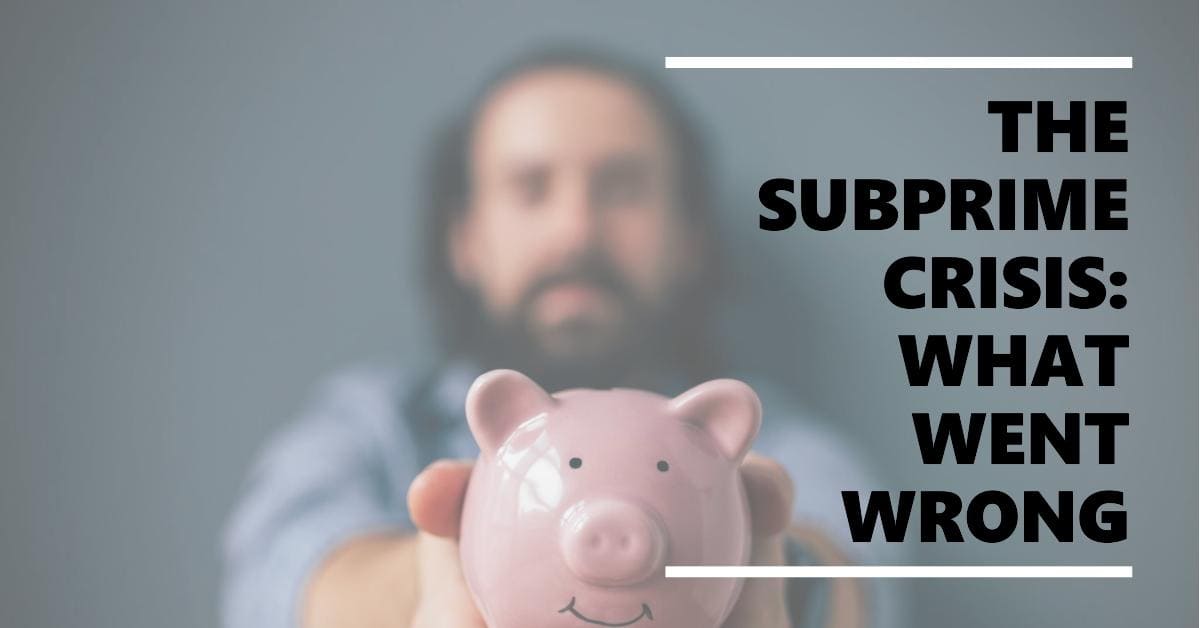The subprime mortgage crisis, a pivotal event in U.S. financial history, was a period of extreme distress in global financial markets and economies. This crisis, which occurred between 2007 and 2010, was a significant contributor to the Great Recession. It was characterized by a dramatic decline in U.S. home prices following the collapse of a housing bubble, leading to mortgage delinquencies, foreclosures, and the devaluation of housing-related securities.
The roots of the crisis can be traced back to the early 2000s, a time when the U.S. housing market experienced a remarkable boom. This boom was partly fueled by low-interest rates, which made borrowing more affordable. Banks and other financial institutions began to offer home loans to individuals with poor credit histories, known as subprime mortgages. These mortgages were then repackaged into mortgage-backed securities (MBS) and collateralized debt obligations (CDOs), which were sold to investors around the world.
Unraveling of the Crisis
As housing prices continued to climb, many believed the value of these securities was secure. However, the reality was that these financial products were highly risky, and their failure would have far-reaching consequences. When the real estate bubble burst, it led to a sharp increase in high-risk mortgage defaults. The subprime meltdown became apparent as borrowers with these risky loans were unable to meet their payment obligations.
The crisis was exacerbated by the proliferation of NINJA loans, an acronym for “no income, no job, no assets.” These loans were given to borrowers who were least likely to repay them. Investment firms, eager to capitalize on the housing market boom, bought these risky loans and repackaged them as MBSs, which were then sold to investors. The rating agencies assigned attractive risk ratings to these securities, making them seem like safe investments.
Global Impact
The collapse of the housing market and the subsequent financial turmoil had a domino effect on the global economy. Financial institutions that had heavily invested in these toxic assets suffered significant losses. Lehman Brothers, a giant in the banking sector, filed for bankruptcy in September 2008, an event often cited as the culmination of the subprime mortgage crisis and a catalyst for the ensuing global financial crisis.
Government Response
The U.S. government responded with a series of measures to stabilize the financial system, including the Troubled Asset Relief Program (TARP) and the American Recovery and Reinvestment Act (ARRA). These interventions were aimed at providing relief to the financial markets and spurring economic recovery.
Regulatory Reforms
The subprime mortgage crisis serves as a cautionary tale of what can happen when financial innovation is not matched with adequate regulation and oversight. It highlighted the need for more stringent lending standards and better risk management practices in the financial industry. The crisis also underscored the interconnectedness of global financial markets and the potential for systemic risk to spread rapidly across borders.
In the aftermath, regulatory reforms such as the Dodd–Frank Wall Street Reform and Consumer Protection Act were enacted to prevent a similar crisis from happening again. These reforms aimed to increase transparency, improve the quality of financial products, and ensure that financial institutions have sufficient capital to withstand economic downturns.
The Impact of the Subprime Crisis on Ordinary People
The subprime mortgage crisis, which precipitated the global financial crisis of 2007-2008, had profound effects on ordinary people, not just in the United States but around the world. The crisis led to a severe and long-lasting recession, with nearly 9 million jobs lost in the U.S. during 2008 and 2009, representing about 6% of the workforce. The job market was slow to recover, with employment numbers not returning to pre-crisis levels until May 2014.
Impact on Homeowners
For homeowners, the crisis was devastating. Many who had taken out mortgages—especially subprime ones—found themselves unable to keep up with payments as interest rates reset higher. As home prices fell, a significant number of homeowners found their homes were worth less than what they owed, a situation known as being “underwater” on their mortgages. This led to a sharp increase in foreclosures, with millions of families losing their homes.
Broader Economic Impact
The crisis also had a broader economic impact. Consumer spending decreased as people lost their jobs and homes, leading to a decline in economic activity. The construction industry, which had boomed during the housing bubble, experienced a significant downturn, further contributing to job losses. Financial firms, burdened by the devaluation of mortgage-backed securities, reduced their lending activities, making credit less accessible for businesses and consumers alike. This credit crunch had a ripple effect, impacting the ability of firms to raise funds and invest, thereby stifling economic growth.
International Impact
Internationally, the crisis affected economies through various channels. For instance, in India, there were concerns about the potential impact on economic growth, which had averaged over 9% in the previous three years. The Indian economy faced challenges such as rising inflation and a current account deficit, which were exacerbated by the global credit crunch and the U.S. economic slowdown.
Lessons Learned and Regulatory Reforms
The subprime crisis highlighted the vulnerabilities of the financial system and the dire consequences of risky lending practices. It underscored the importance of financial literacy for ordinary people, making it clear that understanding the terms of mortgages and other loans is crucial. The crisis also led to regulatory reforms aimed at preventing such a catastrophe from happening again, such as the Dodd–Frank Wall Street Reform and Consumer Protection Act, which sought to increase transparency and improve the quality of financial products.
Bottom Line: The subprime mortgage crisis was a complex event with multiple causes and far-reaching consequences. It was a stark reminder of the importance of responsible lending and borrowing practices, as well as the need for vigilance in financial markets to safeguard against excessive risk-taking. As we look back, it's crucial to learn from the mistakes of the past to ensure a more stable and secure financial future.



